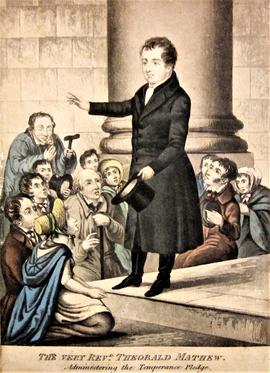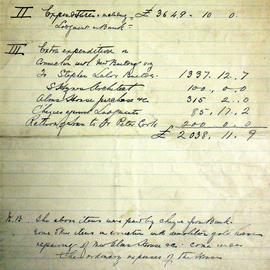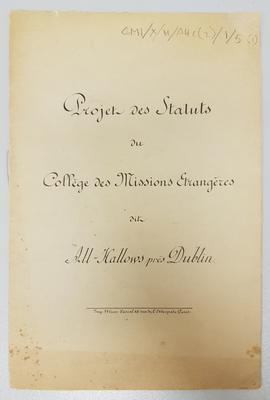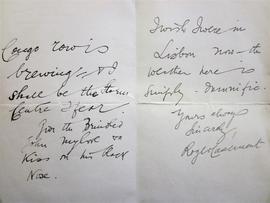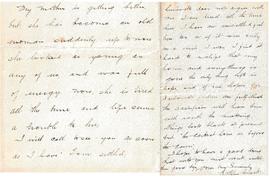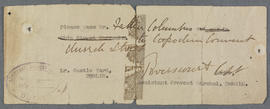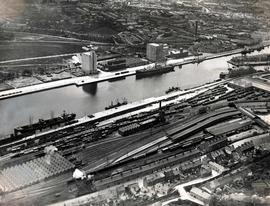- IE CA FM RES/5/6
- Unidad documental compuesta
- c.1880-1935
Parte deIrish Capuchin Archives
• Flier for the Dublin Total Abstinence Society advertising its work and various events. It reads ‘The Dublin Total Abstinence Society was the oldest Society in the City, and the late James Haughton Esq., was the President. … It is a pleasing fact, and worthy of record, that still the friendship exists between the Haughton family and the Society; and the donation of £150, which the Society has received from the four legatees of the late Miss Lizzie Haughton, proves the interest the family still take in the principles which their father advocated for many years in the city’. Reference is made to the three ‘coffee palaces’ and to two large temperance halls (one in Dublin and one in Kingstown). The flier dates to 1885. The reverse of the flier reprints a ‘Great Temperance Procession Poster’ of March 1841. Printed. 2 pp.
• Notebook containing newspaper clippings relating to the League of the Sacred Thirst attached to St. Mary of the Angels, Church Street, Dublin’. An annotation on the first page reads ‘I began this League of the “Sacred Thirst” in June [1880] in our Church of the Lady of the Angels, Church Street, the men meet on Mondays and the women on Wednesday evenings. Fr. Albert Mitchell OSFC’. The clippings date from 10 Sept. 1880 to 23 Sept. 1881 and report meetings of this Temperance Sodality in Church Street and in the temperance hall on Halston Street. Some annotations and comments by Fr. Mitchell are added to the notebook. Clippings, 20 pp.
• Clipping referring to an endowment of $25,000 from the Catholic Total Abstinence Union of America for the establishment of the ‘Father Mathew Chair of Psychology’ at the Catholic University of America, Washington. [c.1930]. Clipping, 2 pp.
• Copy flier for The Father Mathew Hall, Church Street, Dublin, which ‘aims at promoting sobriety and providing instruction and healthful amusement for boys and men’. c.1935. Printed, 1 p.


